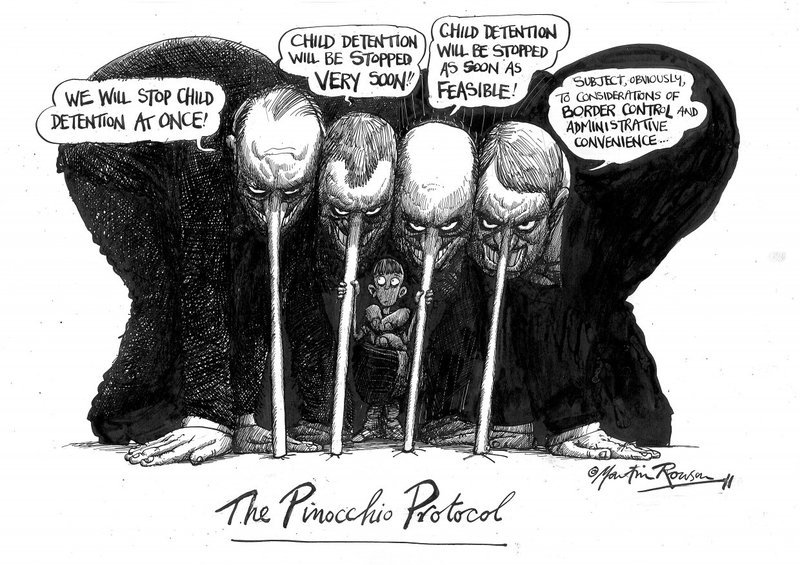
Monday, November 21, 2011, must have been Juvenile (In)Justice Day. Juvenile (In)Justice appeared everywhere, in the news.
In Kashmir, there’s juvenile (in)justice. Children charged with throwing stones are treated, formally, as terrorists. They can be jailed, caged, for up to two years without a trial. Children are placed in adult prisons, while awaiting trial and when convicted. And they will be convicted. Yes, there are laws that protect juveniles. But those laws don’t matter in a state of emergency. Children don’t matter in a state of emergency. They aren’t `juveniles’, and they aren’t `youth’. They’re children.
The state of emergency, the so-called public safety crisis, is always an alibi. States abuse children. In Kashmir, there’s juvenile (in)Justice, and the excuse is crisis. In Malawi, where there is no state of emergency, juvenile (in)justice is simply business as usual, the price of maintaining order. The law says children under 18 deserve special treatment and protection. In fact, children are tried in adult courts and then sent to overcrowded adult prisons. That is the rule of law… everywhere. Take children and maximize their vulnerability.
And then lie about it.
That’s what the United Kingdom has been doing, systematically lying about the abuse of children of asylum seekers and, worse, of asylum seeker children. Sexual abuse. Other forms of physical abuse. Psychological abuse. Spiritual abuse. Of course, there are no laws that address the crimes of breaking the spirit of a child. What’s going on in the United Kingdom is not `merely’ officials lying. It’s Official Lying. The State defines democracy by lying and then chants, “This is what democracy looks like.”
“The ministers lie, the professors lie, the television lies, the priests lie. . . .
These lies mean that the country wants to die.”
And then finally, in the name of security, stability, sovereignty, and, of course, peace, the State, in this instance the United States, proposes a budget that would gorge on prisons and gouge youth of resources, of hope, of life itself. Again, the youth, the juveniles, they’re children.
Meanwhile, cities, like New York, work on plans to increase the use of solitary confinement. It’s called “punitive segregation”, and it preys in particular on `juveniles’, those prisoners living with mental disabilities, and those awaiting trial. Maximize vulnerability. It’s a kind of efficiency that brings education, mental health care, and justice itself to a screaming, screeching halt.
None of this is new or news, of course. The abuse of children in prison is systemic. In the United States, for example, photographer Richard Ross has been exposing juvenile (in)justice for years, and it’s everywhere. It’s the fabric of national democracy. It’s today’s version of burning children, as Robert Bly wrote, some four decades ago:
“But if one of those children came near that we have set on fire,
came toward you like a gray barn, walking,
you would howl like a wind tunnel in a hurricane,
you would tear at your shirt with blue hands,
you would drive over your own child’s wagon trying to back up,
the pupils of your eyes would go wild—
If a child came by burning, you would dance on a lawn,
trying to leap into the air, digging into your cheeks,
you would ram your head against the wall of your bedroom
like a bull penned too long in his moody pen—
If one of those children came toward me with both hands
in the air, fire rising along both elbows,
I would suddenly go back to my animal brain,
I would drop on all fours, screaming,
my vocal chords would turn blue, so would yours,
it would be two days before I could play with my own children again.”
The news Monday was this. We don’t burn children anymore. We send them to prison.
(Image Credit: Open Democracy)